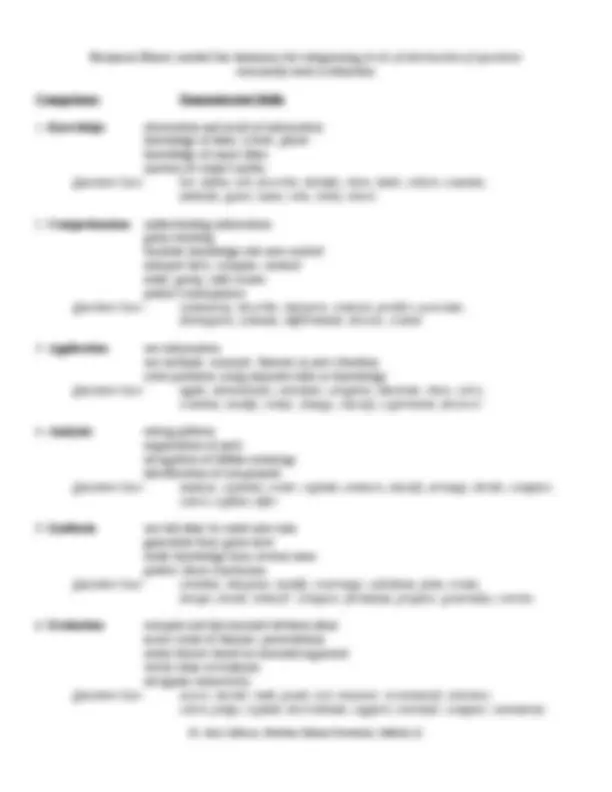



Study with the several resources on Docsity

Earn points by helping other students or get them with a premium plan


Prepare for your exams
Study with the several resources on Docsity

Earn points to download
Earn points by helping other students or get them with a premium plan
Community
Ask the community for help and clear up your study doubts
Discover the best universities in your country according to Docsity users
Free resources
Download our free guides on studying techniques, anxiety management strategies, and thesis advice from Docsity tutors
Bloom's taxonomy is a framework that categorizes levels of cognitive skills and learning objectives in education. It includes six different levels: knowledge, comprehension, application, analysis, synthesis, and evaluation. Each level involves specific skills and question cues to help students master the material.
Typology: Exams
1 / 2

This page cannot be seen from the preview
Don't miss anything!


Benjamin Bloom created this taxonomy for categorizing levels of abstraction of questions commonly used in education Competence Demonstrated Skills